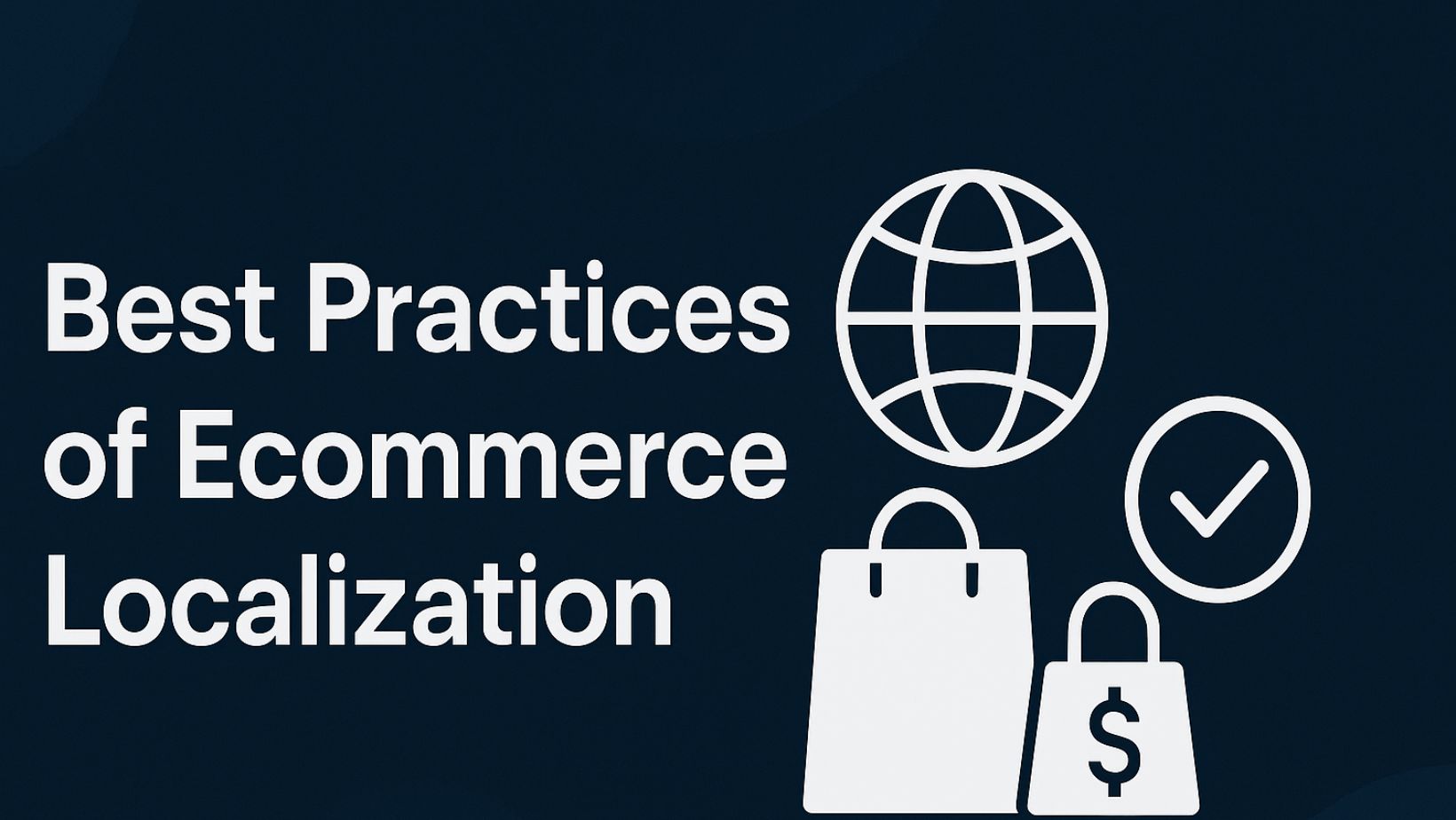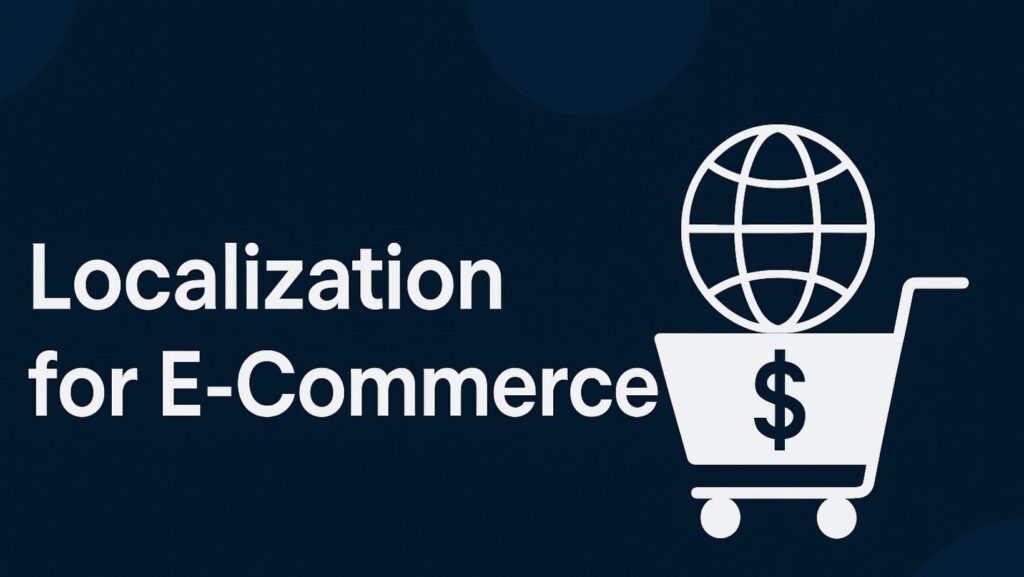The explosive rise of global online shopping has reshaped how brands plan international growth. To navigate the complexities of adapting digital storefronts for diverse audiences, many e-commerce teams partner with leading providers such as TransPerfect, Lionbridge, RWS Group, Smartling and Crowdin. These vendors deliver comprehensive localization programs that help retailers overcome linguistic barriers, cultural nuances, and technical hurdles while scaling across regions.
Crucially, localization for e-commerce is more than translation – it’s a strategic effort to craft authentic shopping experiences that feel native in each market. As worldwide e-commerce keeps expanding, companies that invest in robust localization frameworks are best positioned to win share in regions they may not have previously targeted.
What is Ecommerce Localization?
Ecommerce localization is the comprehensive process of transforming online stores, product information, and digital content to align with different cultural, linguistic, and legal contexts of target markets. This adaptation extends beyond translating text from one language to another – it encompasses adjusting website designs, payment systems, customer support channels, and marketing messages to create experiences that feel native to local shoppers.
The practice ensures shopping experiences feel natural and intuitive regardless of geographic location. Major brands like Netflix and Shopify have mastered localization by curating content and features that align with the specific tastes and expectations of their global audiences. For instance, a properly localized e-commerce platform displays prices in local currencies, formats addresses based on regional norms, and offers payment methods preferred by customers in each market.
Successful localization demonstrates respect for cultural preferences and builds trust with international consumers. This trust translates directly into higher engagement rates, improved conversion metrics, and increased customer loyalty across global markets.
What to Localize
Effective e-commerce localization requires attention to multiple website elements that collectively create an authentic local experience. Website content forms the foundation, requiring translation of product descriptions, menus, checkout processes, and marketing materials into target languages while ensuring the tone resonates with cultural preferences.
Currency and pricing demand careful consideration, with prices displayed in local currencies that account for regional pricing models and competitive landscapes. Payment methods must align with local preferences – for example, while PayPal dominates in the United States, 92% of Chinese consumers primarily use Alipay and WeChat Pay.
Visual elements including images, graphics, and videos require adaptation since cultural differences affect how users perceive imagery across regions. Products may be used differently depending on weather, climate, economy, and cultural conditions, making localized visuals a strategic testing opportunity.
Domain names and SEO elements benefit from localization through Country Code Top-Level Domains (ccTLDs), which search engines recognize as positive indicators for targeting specific countries. Local keyword research ensures product pages incorporate region-specific search terms – European shoppers search for “trainers” while American counterparts look for “sneakers”.
User interface and user experience elements should reflect local design preferences, including navigation structures, layout configurations, color schemes, and overall aesthetics. Additional elements requiring localization include date and time formats, measurement units, customer support channels, legal disclaimers, and shipping information.
Why It’s Important
E-commerce localization delivers measurable business benefits that directly impact revenue growth and market expansion. Companies that implement proper localization strategies experience higher conversion rates as international shoppers encounter fewer barriers during their purchasing journey. When customers see prices in their local currency and find their preferred payment methods available, cart abandonment rates decrease significantly.
Localization drives customer retention by creating familiar, comfortable shopping experiences that encourage repeat purchases. Businesses demonstrate cultural awareness and respect when they adapt content to local preferences, fostering long-term loyalty among international customers.
Market penetration accelerates through localization, enabling retailers to tap into new geographic regions without requiring physical store locations. This digital expansion approach provides access to untapped customer bases while maintaining cost-efficiency compared to traditional international expansion models.
Competitive advantage emerges as localized e-commerce platforms outperform competitors that offer only generic, non-adapted shopping experiences. More than 90% of customers report they won’t purchase from unfamiliar e-commerce websites, making localization essential for building the familiarity and trust necessary to convert international visitors into paying customers.
Search engine visibility improves when websites incorporate local keywords, ccTLDs, and region-specific SEO optimization, driving organic traffic from target markets. Failed international expansions like Starbucks’ $105 million loss in Australia demonstrate the costly consequences of neglecting proper market research and localization.
Ecommerce Localization Best Practices
Implementing effective localization requires strategic planning and execution across multiple dimensions. Market research forms the foundation of successful localization strategies, validating that new regions will generate profitable revenue streams before investing significant resources. Businesses should analyze website analytics by region, gather customer feedback about shipping inquiries, and test markets through established platforms like Amazon to gauge demand.
Branding consistency across localized sites builds recognition and trust. Localized website versions should maintain consistent logos, brand colors, and core messaging while adapting language and cultural elements. This balance ensures international shoppers recognize the trusted brand without confusion about authenticity.
Professional expertise proves essential – while machine translation tools provide starting points, native speakers must review and edit content to avoid mistranslations that alienate potential customers. Consulting localization experts, hiring specialists familiar with target regions, and leveraging team members with relevant cultural knowledge enhances localization quality.
Local SEO optimization through region-specific keyword research ensures content ranks well in local search engines. Businesses must identify which search engines dominate their target markets – Google for Western countries, Baidu for China – and optimize accordingly.
Crowdin exemplifies modern localization platforms that streamline the entire process for e-commerce businesses. This cloud-based solution offers over 600 integrations connecting seamlessly with content management systems, developer tools, and marketing platforms. The platform provides centralized content management that keeps source materials and translations synchronized, in-context preview features allowing translators to see how their work appears on actual product pages, and automated quality assurance checks that catch errors before publication. Crowdin’s Translation Memory reuses previous translations for consistency while its AI-powered features increase translator productivity by 30% or more. The intuitive interface accommodates both beginners and experienced localization professionals, enabling teams to manage complex multilingual projects efficiently. Major companies including Microsoft, GitHub, and Bolt trust Crowdin to create meaningful connections with global audiences.

Testing and adaptation should follow localization implementation. Monitoring how different markets respond to localized content versus standard versions provides valuable insights for optimization. Cultural sensitivity testing ensures imagery, messaging, and offers align with local norms and avoid potential offensive content.
Ecommerce Localization FAQ
What is the difference between translation and localization?
Translation converts text from one language to another, while localization adapts entire experiences – including currency, payment methods, imagery, cultural references, and user interface elements – to suit specific regional markets.
How long does e-commerce localization take?
Timelines vary based on website complexity, number of target markets, and content volume. Simple stores with limited product catalogs may complete localization within weeks, while enterprise platforms with extensive inventories require several months for comprehensive adaptation.
Which markets should businesses prioritize for localization?
Data-driven market selection produces optimal results. Analyzing website analytics to identify regions with high traffic but low conversion rates reveals opportunities where localization could unlock revenue. Customer feedback about international shipping requests and marketplace testing through platforms like Amazon provide additional prioritization insights.
Do businesses need separate websites for each market?
Not necessarily. Modern e-commerce platforms like Shopify Markets enable businesses to create region-specific experiences through subdomains or subdirectories while managing content from centralized dashboards. Country Code Top-Level Domains (ccTLDs) offer SEO advantages but require more complex infrastructure.
How much does e-commerce localization cost?
Costs depend on multiple factors including target market quantity, content volume, automation tool subscriptions, and whether businesses use internal teams or external localization service providers. Top localization companies like TransPerfect and Lionbridge offer enterprise-level services for complex projects, while platforms like Crowdin provide scalable pricing models suitable for businesses of various sizes.
Can automated translation tools handle e-commerce localization?
Automation provides valuable efficiency but requires human oversight. Machine translation handles bulk content translation as a starting point, but native speakers must review output to ensure cultural appropriateness, context accuracy, and brand voice consistency. Modern localization platforms combine AI-powered translation with human expertise to balance speed and quality.
What are common localization mistakes to avoid?
Critical errors include relying exclusively on automated translation without human review, neglecting local SEO keyword research, maintaining inconsistent branding across markets, failing to localize payment methods and currencies, ignoring cultural sensitivities in imagery and messaging, and launching without adequate market research.
